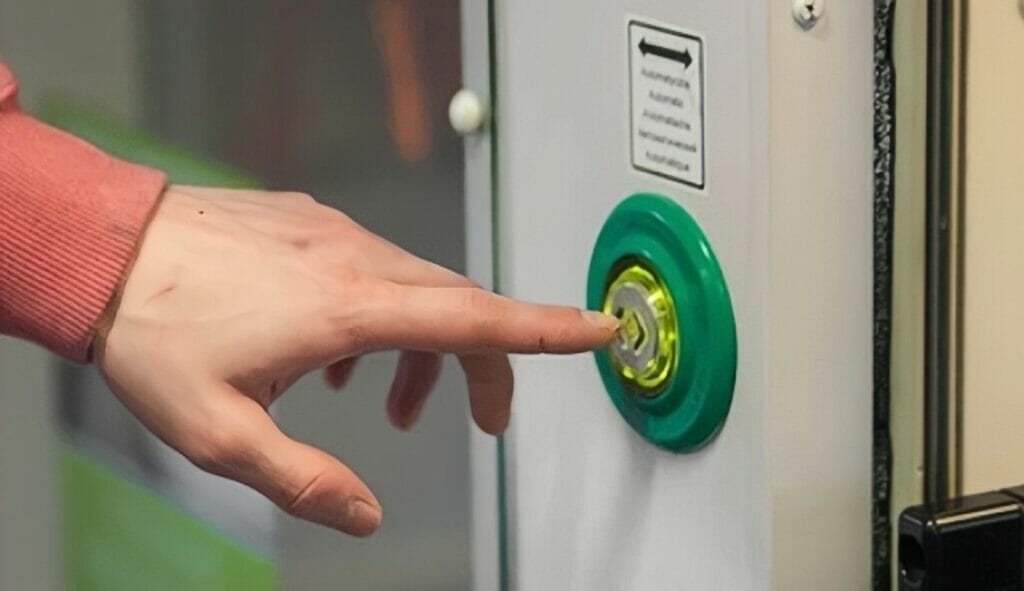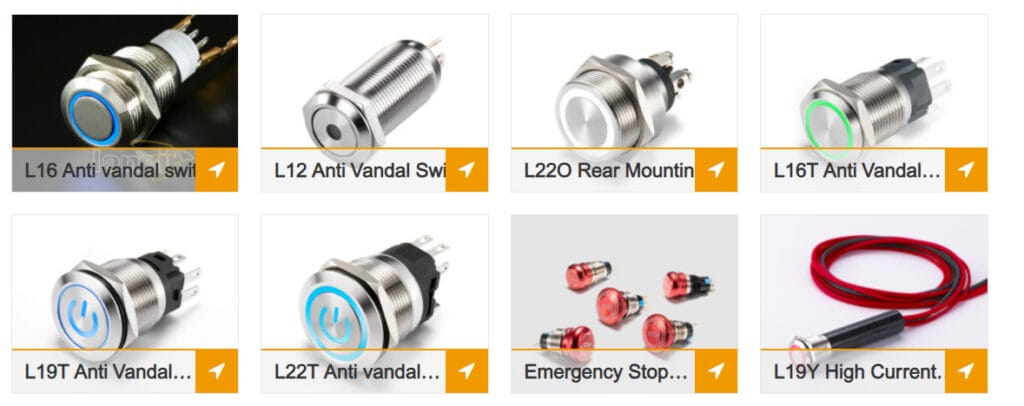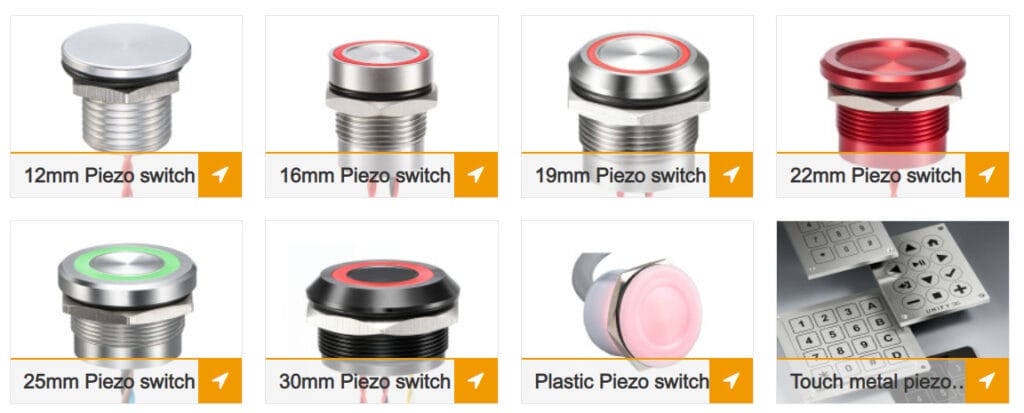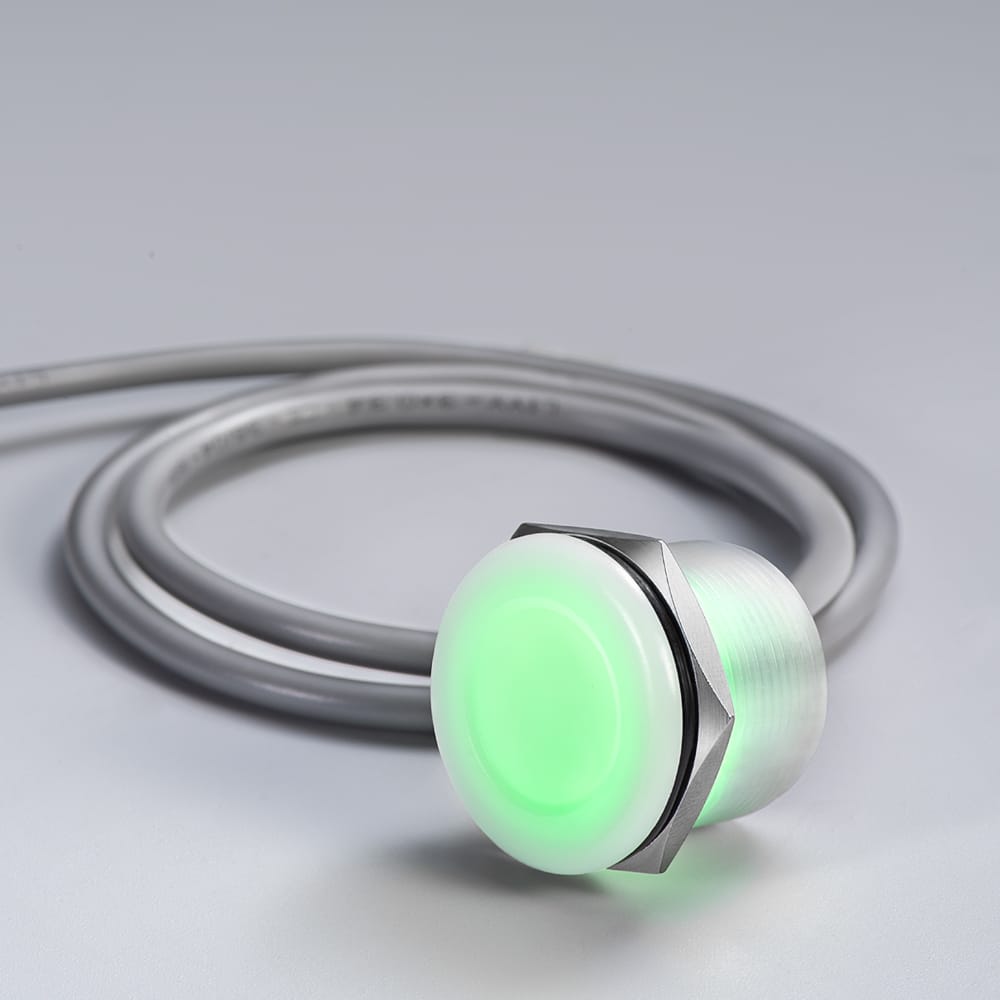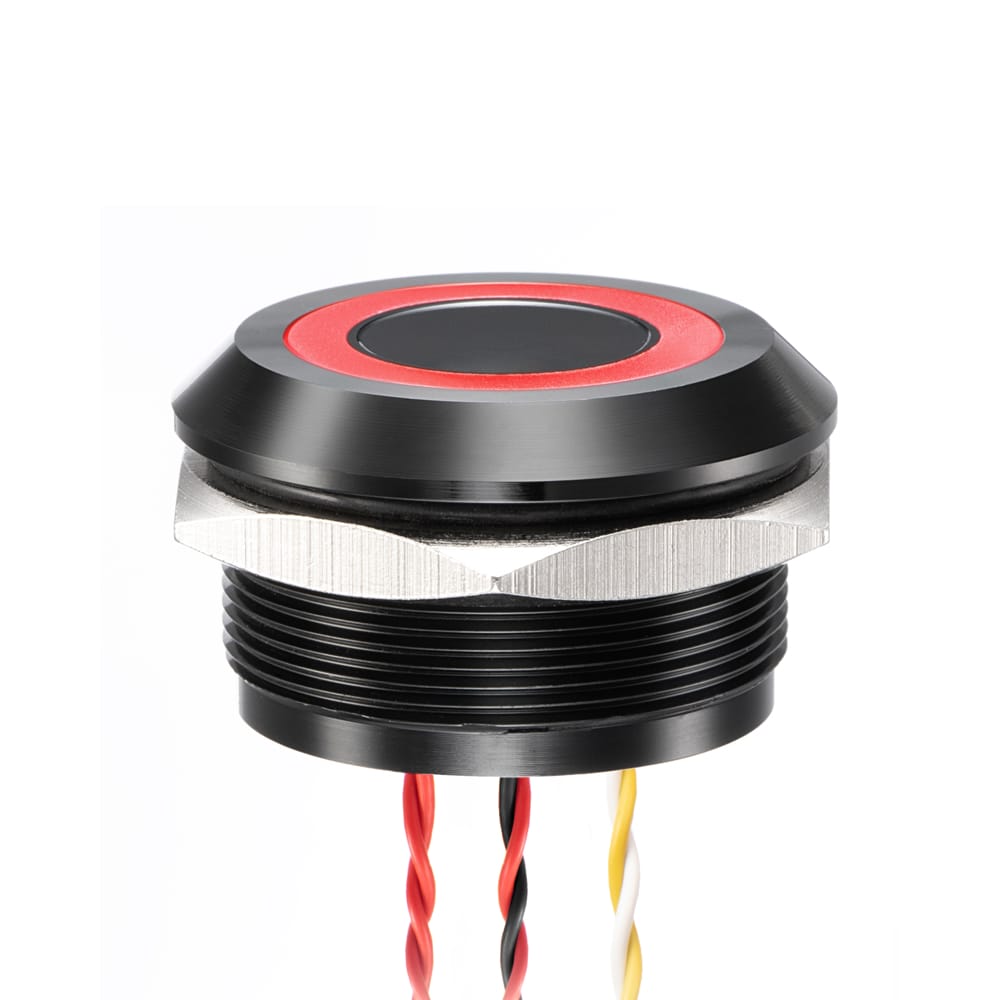Emergencies, like accidents, fires, and other natural disasters, can strike at any moment, often catching you off guard and leaving little time to react. Such situations require a swift and safe evacuation method to ensure everyone gets out timely, minimizing loss. This is where push-to-exit buttons come into play—a seemingly unassuming device that holds within it a multitude of benefits.
They make it simple to exit buildings, help people with disabilities, and prevent panic in emergencies. In case you want to know more about a push-to-exit button along with its working, types, and the best options to try, let’s dive in!
What is a Push to Exit Button?
A push-to-exit button (PTE) is a device typically installed near an exit door or gate in buildings and facilities. When pressed, it temporarily unlocks or releases the door, allowing you to exit quickly during emergencies or even normal use.
PTEs play a pivotal role in emergency egress systems, promoting swift evacuation in fires, natural disasters, or security threats. The cherry on the cake – PTEs or door release buttons are easily accessible and user-friendly, making them inclusive for people of all abilities.
Components of a Push-to-Exit Button
Here are the components of a push-to-exit button:
Button or Actuator
The button or actuator is the most visible part of the PTE button. It is a physical interface that you can press to activate the device.
Switch
The switch is the electrical part of the push-to-exit (PTE) system that comes into play when you press the button. It has a spring-loaded mechanism that either opens or closes an electrical circuit upon pressing the button.
Electrical Wiring
Push-to-exit buttons are connected to the building’s electrical system. Electrical wires run from the button to the control panel or the door’s locking mechanism. They carry the electrical signal needed to unlock the door when the button is pressed.
Housing
A backbox or housing may be used to house and protect the wiring and electrical connections behind the wall or surface where the button is mounted. The material of the housing is usually high-quality plastic.
Indicator Lights (Optional)
In some cases, push-to-exit buttons may include indicator lights to provide visual feedback. It may confirm that the button press has been registered or indicate the door is unlocked.
How Does a Push to Exit (PTE) Button Work?
The push-to-exit (PTE) button operates as a critical component of an emergency egress system, facilitating individuals’ safe and rapid exit from a building or secured area. All you’ve to do is simply press the PTE button to exit the building. The push-to-exit button has a spring-loaded switch mechanism.
Pressing the button momentarily interrupts the electrical circuit, which is connected to the door’s locking or access control system. This interruption signals the system to release the door lock, allowing it to swing open or disengage its latch mechanism.
How to Install a Push-to-Exit Button?
Some of the steps you must follow to install a PTE button are:
Step 1: Determine the Location
Identify the ideal location for the PTE button. It should be easily accessible and within the reach of all building occupants, including those with disabilities. Common locations include near exit doors, adjacent to access control systems, or along escape routes.
Step 2: Power Supply
Ensure that there is a nearby power source for the PTE button. Why? The button needs an electrical connection to function correctly. If necessary, hire an electrician to provide power to the installation location.
Step 3: Prepare the Mounting Surface
If you mount the PTE button on a wall, door frame, or other surfaces, ensure it is clean and smooth. Ensure there is sufficient space for the button and its enclosure.
Step 4: Mounting Bracket or Backbox
Depending on the design of the PTE button, you may need to install a mounting bracket or back box. This provides a secure and stable platform for the button. Secure the bracket or backbox to the chosen location using appropriate hardware, such as screws or anchors.
Step 5: Wire Connections
Connect the push button electrical wiring to the building’s electrical system. Follow the manufacturer’s instructions and any applicable local electrical codes. Typically, you will have wires for power (usually 12V or 24V DC), common, and relay or signal connections.
Step 6: Test the Functionality
After wiring, test the PTE button to ensure it operates correctly. Press the button to confirm that it releases the door or activates the egress system as intended.
Types of Push-to-Exit Buttons
Here are the types of push-to-exit buttons you should know:
Based on Design
Following are the types of PTE buttons depending upon designs:
Surface-Mounted Push to Exit Button
Surface-mounted PTE buttons are affixed directly to the surface of a wall, door frame, or other flat surfaces. They are the most common and straightforward type, providing a physical button that users press to trigger the exit mechanism. They are also easily recognizable and ideal for most standard applications due to their ease of installation and accessibility.
Wireless Push-to-Exit Button
Wireless PTE buttons are designed to eliminate the need for physical wiring connections between the button and the control system. They communicate wirelessly, often using radio frequency (RF) technology, to signal the door release or egress system. This type offers installation flexibility and is particularly useful in retrofitting or situations where wired connections are challenging to implement.
Touchless Infrared Push-to-Exit Button
Touchless PTE buttons incorporate infrared sensor technology to detect the presence or motion of a user’s hand or body without physical contact.
When you approach the sensor within a specified range, it activates the exit mechanism, making it a hygienic and hands-free option. They are preferred in settings where minimizing contact is essential, such as healthcare facilities, restaurants, and cleanroom environments.
Based on Locks
The types of PTE buttons depending upon locks are:
Fail-Safe PTE Button
Fail-safe buttons have locks that are normally locked as long as there’s a power outage and will release the lock when the button is pressed (power supplied), allowing the door to open. It is often used in high-security environments to maintain locking mechanisms, even during power failures or emergencies.
Fail-Secure PTE Button
The fail-secure PTE button has locks that are normally unlocked without power but will lock when power is applied. When the button is pressed, it supplies power to the lock momentarily, securing the door. They are used in situations prioritizing safety and ease of egress, like fire exits, ensuring that doors stay locked during normal operation but open easily during emergencies or power outages.
Benefits of Push-to-Exit Buttons
Here are a few benefits of PTE buttons:
Swift Egress
PTE buttons provide a quick and convenient way for you to exit a building or secured area during emergencies. With a simple button press, you can initiate the release of doors, gates, or locks, allowing for your rapid evacuation. This swiftness can be crucial in critical situations, ensuring that you and others can exit promptly, potentially saving lives.
Accessibility
PTE buttons are also easily accessible to people of all ages and abilities. Whether you have disabilities or limited mobility, Push-to-exit buttons are user-friendly and intuitive. This ensures that you and everyone else can operate them during emergencies without difficulty, ensuring equal access to safety measures.
Reduced Panic
During high-stress emergencies such as fires or security threats, panic can lead to chaos and potential dangers. Push-to-exit buttons play a pivotal role in reducing panic. Their clear and easily recognizable design simplifies the egress process, reducing confusion and promoting an organized evacuation. This contributes to a safer environment for you and others.
Enhanced Security
Exit buttons are seamlessly integrated with access control systems. This integration allows for controlled egress, meaning only authorized personnel can exit through specific doors. This heightened security feature benefits you by preventing unauthorized access, something that is important in sensitive areas or facilities.
Best Push to Exit Buttons to Buy
Here are some of the best PTE buttons you should buy:
1. Plastic Piezo Push Button Electrical Switch
The Plastic Piezo Push Button Electrical Switch is a top-notch solution for your access control and egress needs. This high-quality push-to-exit button boasts a compact 25mm diameter actuator designed for easy use and quick response during emergencies. Installation is a breeze with a 22.2mm diameter mounting hole, ensuring a secure fit in various settings. The switch operates on a normally open, momentary action principle, making it incredibly reliable for your egress system.
Its impressive impulse time of 125-300 milliseconds ensures swift and efficient door release. One standout feature of this push-to-exit button is its LED indicator availability, with options for both 12V and 24V LEDs. This feature offers an extra layer of convenience, providing clear visual feedback to users and indicating when the button is active.
2. 30mm Piezo Push Button
The 30mm Piezo Push Button is a robust and reliable solution made to meet the highest performance and durability standards. This innovative push button boasts a sleek and easy-to-clean metal surface, making it ideal for environments where hygiene is paramount. Its exceptional longevity, with a staggering 50 million cycles of operation, sets this push button apart, ensuring that it stands the test of time in demanding applications.
This reliability is essential, particularly when precision and consistency are critical. Moreover, it comes with ring or dot illumination, providing clear visual feedback to users and adding an extra layer of functionality. High-performance sealing, with IP68 and IP69K ratings, is achieved thanks to its one-piece construction, ensuring the utmost protection against dust and water ingress.
Push to Exit (PTE) Buttons Buying Guide
Here are a few factors you must consider before purchasing a PTE button:
Location and Application
Consider where the PTE button will be installed and its intended use. Different locations and applications may require specific types of PTE buttons. For example, outdoor applications may necessitate weatherproof buttons, while healthcare facilities may benefit from touchless or antimicrobial options.
Type of Design
Find out the type of PTE button design that best suits your environment. Choices include surface-mounted, flush-mounted, wireless, or touchless infrared buttons. Each design has its advantages, so select one that aligns with your installation requirements and aesthetic preferences.
Durability and Material
Assess the durability of the PTE button. Ensure it is built to withstand the expected wear and tear in its environment. Consider the construction material, whether it’s plastic, metal, or other materials, and choose one that suits your durability needs.
Lock Type
Decide whether the PTE button will be used with a fail-secure or fail-safe locking system, as this will impact the button’s functionality and wiring requirements.
Wiring Requirements
Evaluate the wiring requirements for the PTE button. Determine whether it operates on low-voltage DC power (e.g., 12V or 24V) and whether it requires additional wiring for LED indicators or integration with other systems.
Conclusion
Push-to-exit buttons are crucial for swift and safe exits during emergencies. They come in various types, designs, and materials, catering to diverse needs. Whether it’s ensuring accessibility, enhancing security, or complying with regulations, these buttons play a vital role in building safety.
If you are looking for the best push-to-exit buttons, Langir has your back. We have many exit buttons featuring LED lights and a high IP rating. All our products are high-quality and work smoothly, ensuring a safe exit. Contact us today to get the best push-to-exit switches now!
FAQs
What are the Features of Push Button?
Push buttons are tactile switches that are normally open and establish a specific connection only when pressed. In simple terms, push buttons close the circuit upon being pressed, allowing electrical flow, and then open it when released, interrupting the connection.
What is the request-to-exit option?
The request-to-exit (REX) option is a common security feature in access control systems. It allows individuals inside a secured area to trigger the unlocking of a door or gate, typically by pressing a button or motion sensor, enabling them to exit without needing an access card or key.
What is the difference between push-to-release and push-to-hold buttons?
The key difference between push-to-release and push-to-hold buttons is their functionality. Push-to-release buttons activate a mechanism when pressed and return to their original position when released, briefly unlocking or opening something. In contrast, push-to-hold buttons require continuous pressure to keep a door or device unlocked or open, releasing the lock only when pressure is removed.
Send your inquiry now
All Langier News:
Read Moreelectronica 2024 Hall-Stand No.: A2 160 November 12-15, 2024 Tr...

 English
English 简体中文
简体中文